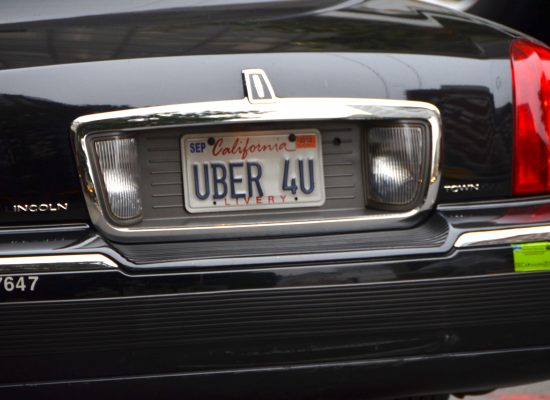

In a new analysis titled Uber-Positive, Jared Meyer of the Manhattan Institute concludes that “The Ride-Share Firm Expands Transportation Options in Low-Income New York”. Setting aside my own issues with calling Uber a “ride-share firm” (sharing used to be a word with a more specific meaning), the report and its press coverage suggest that beyond increasing options, Uber is in fact increasing the equity of transportation access for low-income New Yorkers. There is no data in the Manhattan Institute’s analysis that supports this equity-focused claim.
The research question one would need to ask to back up the claim that Uber makes transportation more equitable is, who is actually taking Uber rides, whether in low-income neighborhoods and otherwise. As Meyer acknowledges in the paper, however, Uber did not provide data that could support equity-related claims, as “The data… mask the identity of individual riders — such that race, income, and other personal information are not revealed”.
Now, don’t take my word for it. The analysis is just a few pages long, so it won’t take you much time to get through it. You’ll notice that Meyer takes care not to explicitly make claims his analysis doesn’t support, but to my eye he implies conclusions that his data simply cannot back up.
The five takeaways that the Manhattan Institute’s analysis highlights (UberX is a small fraction of taxi rides; UberX is less Manhattan focused than taxis; UberX is growing fast in low-income neighborhoods; UberX serves many demographically diverse neighborhoods; UberX trips are not heavily concentrated at rush hour) are true, even if they aren’t new findings. The Manhattan Institute implies that low-income minorities are using the service more frequently by discussing the demographics of neighborhood residents — a very different group than the Uber’s actual user base, and maybe not relevant at all, given that people can use Uber in any neighborhood, not just their own. It’s very possible — if not likely — that wealthier residents are driving the observed increases in Uber use.
Further, by reporting increase in uptake in neighborhoods on a percentage basis (“Over the course of 2014, the historically low-income neighborhoods of Jackson Heights, Astoria, Harlem and Washington Heights all saw increases in UberX trips of over 1,200%”), the Manhattan Institute masks what could be very low ridership numbers in absolute terms. Growth from one user to 13 over the course of a year would also be a 1200% increase, so more context would be illuminating.
Even NextCity’s coverage misses all of this, further implying that this report demonstrates transparency on Uber’s part. If anything, this analysis highlights the need for increased transparency from the transportation network company. Uber’s data has the potential to teach us much about transportation’s evolving impact on equity in cities, and about transportation planning more generally. City officials are increasingly calling for access to such data, though so far to little avail.
Uber is increasing transportation options everywhere it operates, and “low-income New York” is no different — but only as a place. This Manhattan Institute analysis sheds light on where Uber trips are happening, but not who is taking them. People are the relevant unit of analysis where equity is concerned, but the data Uber released in this case only speaks to place, which inevitably leads to dangerous conclusions.
I will be the first to admit that Uber provides a great service to those who can afford it. And with market competition and the addition of new initiatives like Smart Routes, I hope it will become more affordable still. If Uber (or anyone else) wants to talk coherently about the company’s impact on equity, however, data analysis needs to focus on who is taking these rides, not just where.
Uber has enormous potential to improve urban mobility as part of a multi-modal transportation system. People around the world are using the service to get where they want to go. But equitable urban mobility will require a constellation of options at different price points — and public transportation remains the most affordable option in most cases. Uber’s operation has the potential to not only complement but actively support public transportation in New York City’s most diverse neighborhoods and beyond, but the data it has released to date do not and cannot yet show this to be the case.
 Built to Win: Riders Alliance Campaign Secures Funding for More Frequent Subway Service
Built to Win: Riders Alliance Campaign Secures Funding for More Frequent Subway Service
Thanks to Riders' Alliance successful #6MinuteService campaign, New York City subway riders will enjoy more frequent service on nights and weekends, starting this summer. In this post, we chronicle the group's winning strategies and tactics.
Read More A Bus Agenda for New York City Mayor Eric Adams
A Bus Agenda for New York City Mayor Eric Adams
To create the “state-of-the-art bus transit system” of his campaign platform, Mayor Adams will have to both expand the quantity and improve the quality of bus lanes. We recommend these strategies to get it done.
Read More